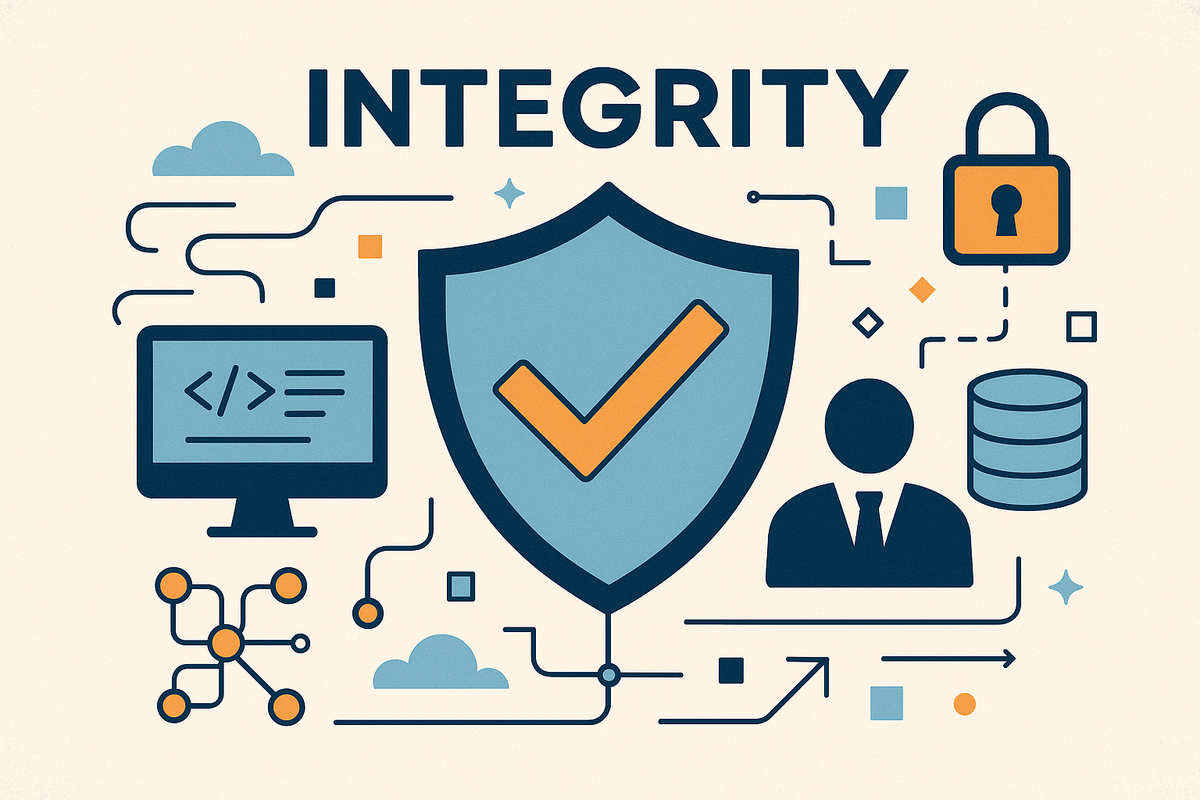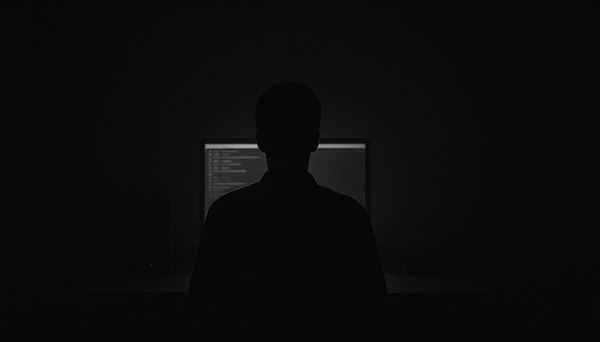Integrity as a System Architecture
Integrity is not perfection but verification, a system’s ability to remain coherent through change. What endures after every correction is not flaw but proof of life, the quiet checksum of conscience.

An essay on verification and design.
Every architecture hides an ethic. Beneath every system lies a decision about what must never fail. Engineers call it a design principle, philosophers call it a value, but both describe the same thing: the foundation on which trust is built. A bridge, a circuit, a moral code: all are architectures of belief. They exist not simply to function, but to endure scrutiny.
In the technical world, integrity means consistency across change. A database must remain coherent when altered; a network must synchronize truth between nodes. Yet we rarely extend this logic to ourselves. We treat human integrity as immutability, as moral perfection untouched by contradiction. The result is fragility. What cannot adapt will eventually collapse. Immutability preserves data but destroys meaning. A system that cannot change cannot learn.
When I designed distributed systems, I spent weeks writing protocols that could detect and recover from failure. Checksums, consensus algorithms, redundancy; all served one purpose: verification without panic. The goal was not to prevent error, but to recognize it quickly enough to correct it. That design philosophy is also the essence of conscience. Conscience is the internal checksum of intention. It tests whether what we say and what we do still align after transmission through reality’s noise.
Integrity, then, is not moral purity; it is verifiability under stress. Like a well-designed network, it must anticipate interruption, latency, and loss. Systems that ignore noise disintegrate when confronted with it. Human beings are no different. To live without reflection is to broadcast without feedback, to send signals without confirming they still make sense when received.
In architecture, integrity is maintained through continuous auditing. In human life, it is maintained through self-examination, a form of audit that must be both honest and forgiving. The systems I trusted most were not the ones that never failed, but the ones that failed gracefully. They contained redundancy and rollback, ways to restore function without denying that an error had occurred. A conscience that cannot acknowledge error becomes brittle, and a brittle conscience will shatter at its first contradiction. A system that cannot be forgiven cannot be trusted.
Designers speak of graceful degradation: the art of failing in recoverable ways. Ethical life demands the same principle. When we harm, we must degrade with grace, retaining enough coherence to be repaired. The difference between collapse and recovery lies in whether we record the event honestly. Ethical systems, like distributed ledgers, require transparency; every transaction must be traceable, every correction documented. Truth is reproducibility.
Imagine integrity as a living protocol. Its inputs are intentions; its process is reflection; its output is accountable action; its feedback loop is review. The system is never idle. It verifies continually, recalculating trust in the face of new data. In this sense, moral integrity and technical resilience converge. Both require active verification, not once, but always.
This model applies beyond individuals. Institutions, artificial intelligences, and societies all face the same architectural question: what should persist when everything else evolves? If we design for power or speed, we create efficient collapse. If we design for verifiability, we create endurance. The choice between opacity and transparency is no longer philosophical; it is structural.
Technology no longer asks for permission to remember. It does so by default. The moral counterpart must be deliberate forgetting: not erasure, but forgiveness. Deletion without deception. A conscious act of release that still leaves a trace for learning. Ethical design will require systems capable of memory that does not imprison, and amnesia that does not corrupt.
When I write, I often think of architecture more than prose. Each sentence carries load; each paragraph is a column of reasoning. What holds the structure together is not symmetry but integrity or the assurance that the weight of truth, however distributed, will not exceed its supports. The same applies to systems we build and lives we inhabit.
Integrity is not the absence of corruption. It is the capacity to verify what remains human after every update. To design for that is to admit imperfection as part of endurance. To live by it is to accept that repair, not permanence, is the highest form of stability.
Signal sent. Verification ongoing.



